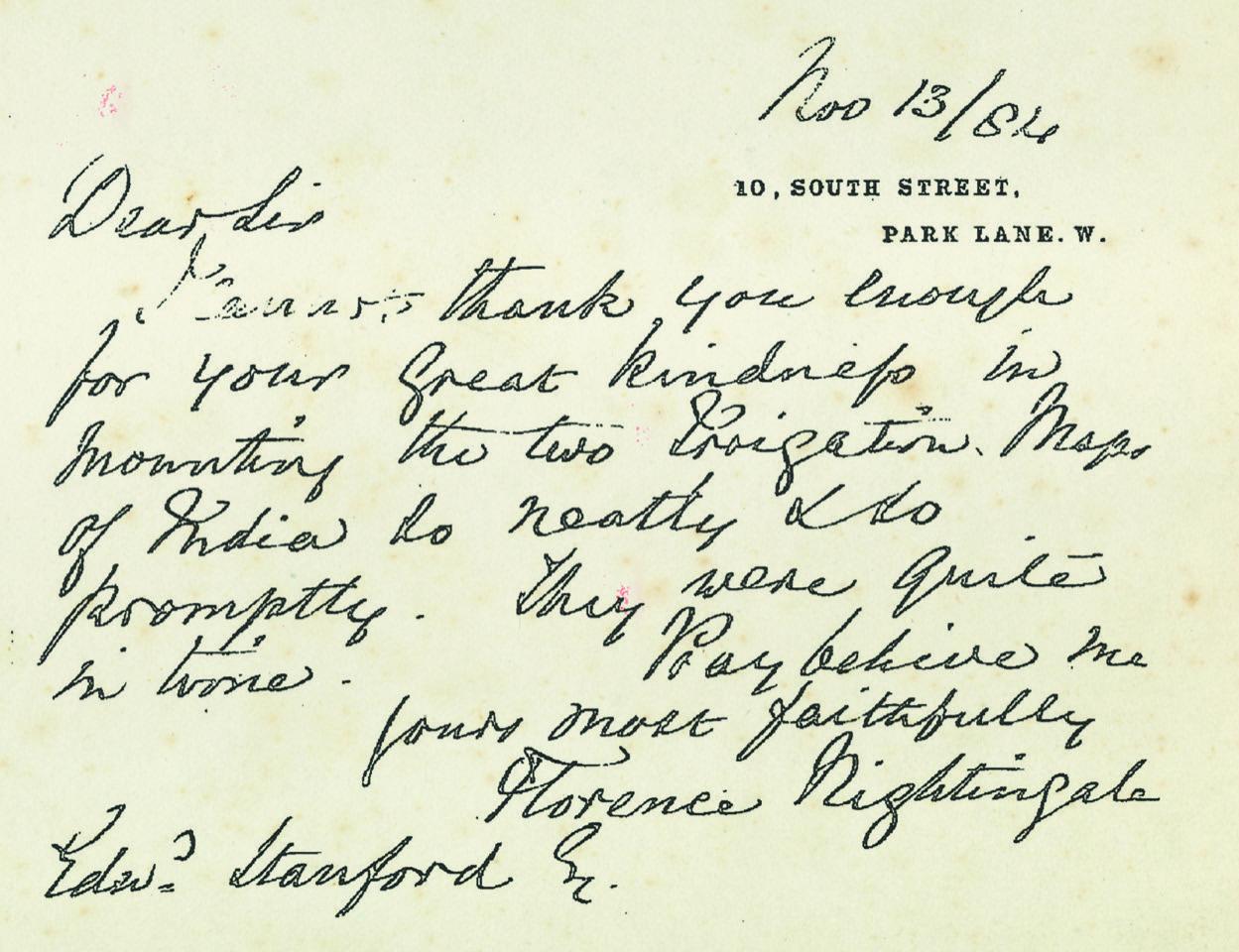Exploration exhibition opens in Covent Garden
Correspondence from Captain Scott, Winston Churchill and Florence Nightingale is featured
Your support helps us to tell the story
From reproductive rights to climate change to Big Tech, The Independent is on the ground when the story is developing. Whether it's investigating the financials of Elon Musk's pro-Trump PAC or producing our latest documentary, 'The A Word', which shines a light on the American women fighting for reproductive rights, we know how important it is to parse out the facts from the messaging.
At such a critical moment in US history, we need reporters on the ground. Your donation allows us to keep sending journalists to speak to both sides of the story.
The Independent is trusted by Americans across the entire political spectrum. And unlike many other quality news outlets, we choose not to lock Americans out of our reporting and analysis with paywalls. We believe quality journalism should be available to everyone, paid for by those who can afford it.
Your support makes all the difference.“Sir, I have just received your map of the Antarctic Region,” begins the letter from Captain Robert Falcon Scott to Edward Stanford, the London map seller.
“I observe that the farthest-south-point is marked ‘Scott and Shackleton,’ an inscription that is not in accordance with any authorisation.”
“The coupling of Mr Shackleton’s name with mine implies dual leadership and it is therefore not in accordance with fact.”
On 30 December 1902, Scott had led a party across Antarctica to a point less than eight degrees from the South Pole.
Edward Stanford’s cartographer had pinpointed this remarkable journey when mapping the southern polar region for the London Atlas Series.
But, as the tetchy dispatch from Captain Scott shows, the company did not ask permission from the leader of the Discovery expedition before including the name of Scott’s rival, Ernest Shackleton, on the new chart.
Scott’s letter is one of a number featured in a new exhibition of correspondence, old travel books and maps in Covent Garden, central London, curated by Stanfords.
Florence Nightingale was a more satisfied customer than Scott, and in 1884 she wrote a postcard to thank Stanfords “for your great kindness in mounting the two trigonomic maps of India so neatly and so promptly”.

Winston Churchill’s holiday plans for 1937 are evident in a four-shilling (20p) receipt for a road map of Yugoslavia.
Much of the material was uncovered during Stanfords’ recent move from its long-established premises in Long Acre to a smaller property at 7 Mercer Walk.
The Mercers’ Company, which owns the land, has provided an exhibition space for the new exhibition around the corner at 10 Langley Street.
The chief executive of the map and guidebook store, Vivien Godfrey, said: “We’re so excited to be sharing with the public the overflowing chest of artefacts that are so special to us here at Stanfords.
“Our visitors will be able to explore the history of travel and be astonished by a wealth of stories of intrepid adventure.”
Visitors will also be able to handle Victorian-era books and maps, while younger travellers can avail of the chance to dress as explorers and pose in front of rainforest and polar landscapes.
The exhibition, which is free, opens to the public on Friday 18 October and runs until January 2020.

Join our commenting forum
Join thought-provoking conversations, follow other Independent readers and see their replies
Comments